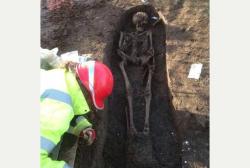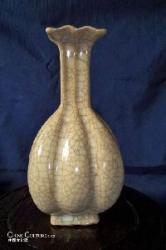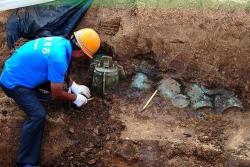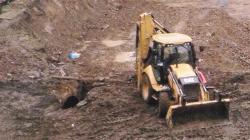INSTITUT SUPERIEUR D'ANTHROPOLOGIE
INSTITUTE OF ANTHROPOLOGY
ONLINE COURSES / COURS A DISTANCE
WINTER TERM : JANUARY 2015
REGISTER NOW
ROYAUME UNI –  Aylesham - The discoveries, some of which are likely to date back more than 2,000 years, were made by archaeologists at the building site of the Aylesham expansion.A well-preserved skeleton thought to be from the Saxon era - therefore up to 1,500 years old - was lifted from an ancient burial ground by experts. Also found were middle Bronze Age cremation urns and Roman ditches full of domestic items. Post-excavation work on the skeletons will take place under the gaze of Dr Chris Deter at the Human Osteology Research Lab at the School of Anthropology and Conservation at the University of Kent. They hope to determine significant information about the area’s ancient occupants, including analysis of teeth and bones, which could show whether they were natives, and carbon-footing to help pinpoint a more specific date.
Aylesham - The discoveries, some of which are likely to date back more than 2,000 years, were made by archaeologists at the building site of the Aylesham expansion.A well-preserved skeleton thought to be from the Saxon era - therefore up to 1,500 years old - was lifted from an ancient burial ground by experts. Also found were middle Bronze Age cremation urns and Roman ditches full of domestic items. Post-excavation work on the skeletons will take place under the gaze of Dr Chris Deter at the Human Osteology Research Lab at the School of Anthropology and Conservation at the University of Kent. They hope to determine significant information about the area’s ancient occupants, including analysis of teeth and bones, which could show whether they were natives, and carbon-footing to help pinpoint a more specific date.
http://www.dover-express.co.uk/PICTURES-Saxon-skeleton-ancient-discoveries/story-24775712-detail/story.html
CHINE –  Baofeng - Chinese archeologists said they have discovered a new type of Chinese porcelain at a site in central China's Henan Province. More than 1.2 million pieces have been unearthed at the excavation site of a 1,000-year-old Ruyao porcelain works in Baofeng County since 2012, said Zhao Hong from the Henan provincial institute of cultural relics and archaeology. Archeologists have unearthed furnaces, workshops and instruments, Zhao said on Thursday, adding that around 287 pieces can be restored. Some of the pieces are especially rare, such as a rectangular tray, and many of the items boast beautiful designs and complicated carvings. It is unlikely that these items were used by the hoi polloi, as they are much more the standard of tools for sacrifice purposes, said Zhao. The furnaces are similar in structure to other Ruyao kiln furnaces but appear to have had lower sintering temperatures, according to the expert. These findings will greatly assist research into the Ruyao kiln techniques. Henan Province, referred to as the cradle of the Chinese civilization, was once a production center for chinaware. It boasts three famous kiln sites -- the Ruyao kiln in Baofeng, the Junyao kiln in Yuzhou city and the Huangye kiln, which produced the Tang tri-color pottery in Gongyi city. Chinese scholars believe that the Ruyao kiln, the largest celadon producer of the Song Dynasty (960-1279), was in Qingliangsi in Baofeng County. In 2000, archeologists found what they believed to be the central processing section of the works, subsequent digs have revealed 15 furnaces, two workshops, various instruments, glazing materials and fragments of Ruyao porcelain.
Baofeng - Chinese archeologists said they have discovered a new type of Chinese porcelain at a site in central China's Henan Province. More than 1.2 million pieces have been unearthed at the excavation site of a 1,000-year-old Ruyao porcelain works in Baofeng County since 2012, said Zhao Hong from the Henan provincial institute of cultural relics and archaeology. Archeologists have unearthed furnaces, workshops and instruments, Zhao said on Thursday, adding that around 287 pieces can be restored. Some of the pieces are especially rare, such as a rectangular tray, and many of the items boast beautiful designs and complicated carvings. It is unlikely that these items were used by the hoi polloi, as they are much more the standard of tools for sacrifice purposes, said Zhao. The furnaces are similar in structure to other Ruyao kiln furnaces but appear to have had lower sintering temperatures, according to the expert. These findings will greatly assist research into the Ruyao kiln techniques. Henan Province, referred to as the cradle of the Chinese civilization, was once a production center for chinaware. It boasts three famous kiln sites -- the Ruyao kiln in Baofeng, the Junyao kiln in Yuzhou city and the Huangye kiln, which produced the Tang tri-color pottery in Gongyi city. Chinese scholars believe that the Ruyao kiln, the largest celadon producer of the Song Dynasty (960-1279), was in Qingliangsi in Baofeng County. In 2000, archeologists found what they believed to be the central processing section of the works, subsequent digs have revealed 15 furnaces, two workshops, various instruments, glazing materials and fragments of Ruyao porcelain.
http://news.xinhuanet.com/english/china/2014-11/27/c_133818029.htm
CHINE –  Baoji - Chinese archaeologists recently discovered several graves which are speculated to belong to the Western Zhou Dynasty (1046–771 BC) in Baoji City of northwest China’s Shanxi Province. Most of the graves were robbed, but among the graves there is a rubble tomb believed to be a nobleman’s tomb. The rubble tomb is 3.7 meters (12.14 feet) long, two meters (6.5 feet) wide and 1.3 meters (4.2 feet) buried under earth. According to the buried artifacts and the hierarchy of the Western Zhou period, the tomb buried a senior government official. “As we known, the Western Zhou period criteria to identify the identification and hierarchical title of the tomb owner is the amount of bronze tripods in grave. We found five bronze tripods and those five may be a set. According to the five bronze tripods, the owner of the tomb might be a senior official of nobility group,” said Sun Qingwei, deputy dean of School of Archaeology and Museology, Peking University. The tomb was broken during robberies as it was under the riverbed, covered with rubble which protected it from being discovered, according to archaeologists. Archaeologists found more than 37 relics of the Western Zhou period from the tomb, one of the biggest discoveries over the past 30 years. “Currently, we have already classified 17 bronze vessels, more than 20 potteries,” said Sun. The archaeologists estimated there are more than 30 tombs nearby.
Baoji - Chinese archaeologists recently discovered several graves which are speculated to belong to the Western Zhou Dynasty (1046–771 BC) in Baoji City of northwest China’s Shanxi Province. Most of the graves were robbed, but among the graves there is a rubble tomb believed to be a nobleman’s tomb. The rubble tomb is 3.7 meters (12.14 feet) long, two meters (6.5 feet) wide and 1.3 meters (4.2 feet) buried under earth. According to the buried artifacts and the hierarchy of the Western Zhou period, the tomb buried a senior government official. “As we known, the Western Zhou period criteria to identify the identification and hierarchical title of the tomb owner is the amount of bronze tripods in grave. We found five bronze tripods and those five may be a set. According to the five bronze tripods, the owner of the tomb might be a senior official of nobility group,” said Sun Qingwei, deputy dean of School of Archaeology and Museology, Peking University. The tomb was broken during robberies as it was under the riverbed, covered with rubble which protected it from being discovered, according to archaeologists. Archaeologists found more than 37 relics of the Western Zhou period from the tomb, one of the biggest discoveries over the past 30 years. “Currently, we have already classified 17 bronze vessels, more than 20 potteries,” said Sun. The archaeologists estimated there are more than 30 tombs nearby.
http://www.cctv-america.com/2014/11/26/chinese-archaeologists-discover-relics-from-western-zhou-period
TURQUIE –  Istanbul - The traces of a large cistern have been found during the construction of a hotel on land owned by the Armenian Catholic Mıhitaryan Monastery and School Foundation in Istanbul’s Şişli Halaskargazi neighborhood. The historical structure, which was about to be buried by construction vehicles, was rescued at the last minute after being noticed by an observer. When they arrived in the area, archaeologists from the Istanbul Archaeology Museum found the structure, which is thought to be a Byzantine cistern, was about to be destroyed and buried.
Istanbul - The traces of a large cistern have been found during the construction of a hotel on land owned by the Armenian Catholic Mıhitaryan Monastery and School Foundation in Istanbul’s Şişli Halaskargazi neighborhood. The historical structure, which was about to be buried by construction vehicles, was rescued at the last minute after being noticed by an observer. When they arrived in the area, archaeologists from the Istanbul Archaeology Museum found the structure, which is thought to be a Byzantine cistern, was about to be destroyed and buried.
http://www.hurriyetdailynews.com/another-byzantine-structure-rescued-in-istanbul.aspx?pageID=238&nID=74901&NewsCatID=375